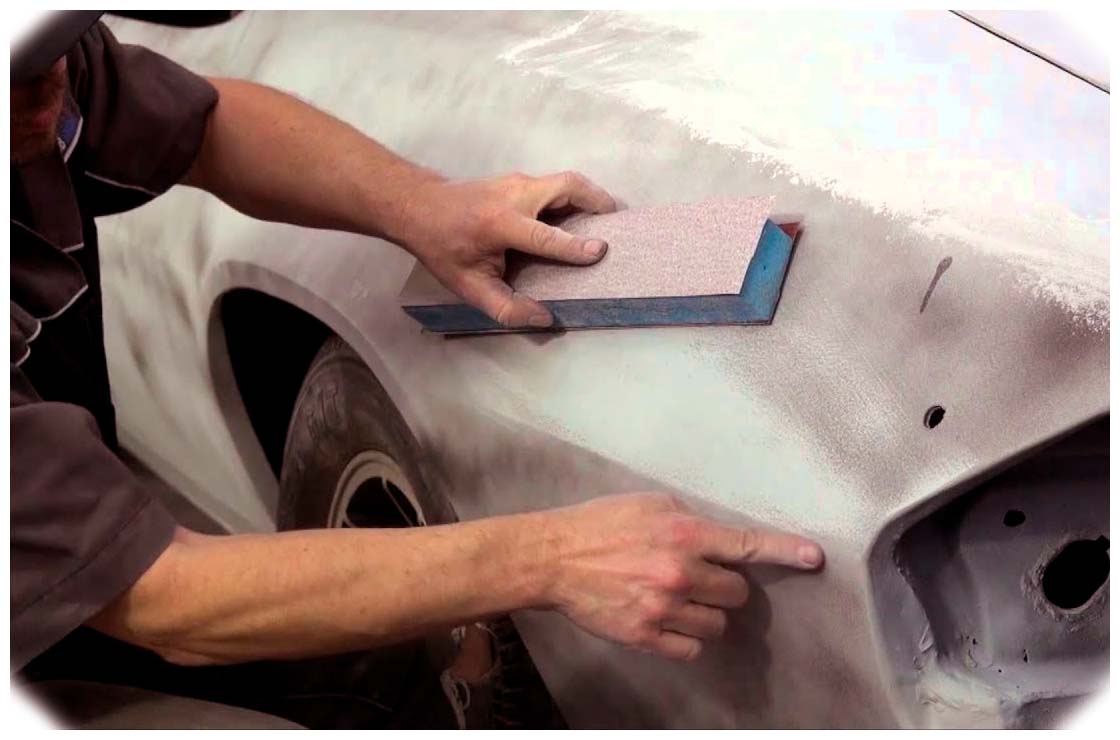Block sanding a car is a highly effective and efficient way to create an even, smooth finish. While it may seem like a daunting task, block sanding is quite easy when done correctly and safely. This comprehensive guide will provide step-by-step instructions of block sanding a car, as well as the benefits of doing so.
Block sanding serves many benefits when compared to other methods of bodywork preparation. It is not only more cost-effective than using an electric sander or power washer but also provides superior results. The process yields better adhesion and eliminates any ridges created by hand sanding or power washing. Additionally, block sanding results in an extremely smooth surface that reflects light evenly for optimum paint job results.
The Steps Involved in Block Sanding a Car
Before starting the block sanding process, it’s important to prepare both the car and you properly for safety reasons. Ensure you wear protective clothing such as long sleeve shirts and pants, gloves and safety glasses when working on any vehicle. Additionally, make sure that all panels have been wiped down with wax remover before beginning to remove any dirt and debris.
Block sanding is an important step in the process of refinishing a car’s surface. It helps create a smooth and even finish by levelling out imperfections and removing any high spots. Here are the general steps involved in block sanding a car:
-
Gather the necessary materials: You will need a sanding block, sandpaper of various grits (ranging from coarse to fine), a bucket of water, and a sponge.
-
Prepare the car: Clean the surface of the car thoroughly to remove any dirt, debris, or wax. This ensures that you have a clean and smooth surface to work on.
-
Assess the surface: Inspect the car’s surface for any dents, scratches, or imperfections that need to be addressed. Note down areas that require extra attention during the block sanding process.
-
Begin with coarse sandpaper: Start with lower grit sandpaper (such as 80 or 120) and attach it to the sanding block. Dip the sandpaper in the bucket of water to keep it wet. Wet sanding helps prevent the buildup of heat and clogging of the sandpaper.
-
Sand in straight lines: Hold the sanding block firmly and apply even pressure. Sand in straight lines, moving back and forth across the surface. Keep the sandpaper always wet to maintain a smooth and consistent sanding action.
-
Check progress regularly: Periodically wipe away the sanding residue and inspect the surface to check for progress. Look for any high spots, scratches, or uneven areas that need further attention. Continue sanding until the surface is uniformly smooth.
-
Gradually move to finer grits: As you progress, switch to higher grit sandpapers (such as 220 or 400) to further refine the surface. Repeat the sanding process, keeping the surface wet and checking for any imperfections.
-
Feather edges and blend transitions: Pay special attention to edges and transitions between panels. Use a lighter touch and feather the sanding to create a seamless blend between surfaces.
-
Finish with ultra-fine grit: Once you are satisfied with the surface, use very fine grit sandpaper (such as 800 or 1000) to achieve a final smooth finish. This step helps prepare the surface for polishing or applying paint.
-
Clean and dry the surface: After block sanding, thoroughly clean the surface with water and a sponge to remove any sanding residue. Dry the surface completely before proceeding with further refinishing steps.
When block sanding a car, it’s important to take your time and approach the process methodically. Also, be sure to keep the sandpaper always wet to prevent excessive heat buildup and ensure more even results. Finally, don’t be afraid to go over areas multiple times if needed. The key is to achieve a level and smooth surface before proceeding with any additional refinishing steps.
Conclusion
Block sanding a car is an important step in preparing the surface for any refinishing work. By following this comprehensive guide, you will be able to block sand your car successfully and achieve professional-looking results. Taking the time to do it right from the start will ensure that you get the best possible finish for your vehicle.


 Begin with coarse sandpaper: Start with lower grit sandpaper (such as 80 or 120) and attach it to the sanding block. Dip the sandpaper in the bucket of water to keep it wet. Wet sanding helps prevent the buildup of heat and clogging of the sandpaper.
Begin with coarse sandpaper: Start with lower grit sandpaper (such as 80 or 120) and attach it to the sanding block. Dip the sandpaper in the bucket of water to keep it wet. Wet sanding helps prevent the buildup of heat and clogging of the sandpaper.
Add Comment